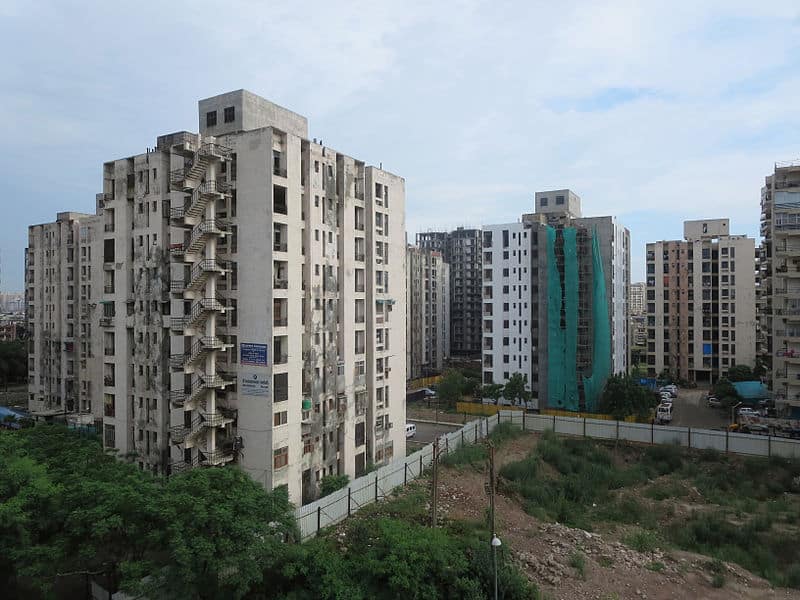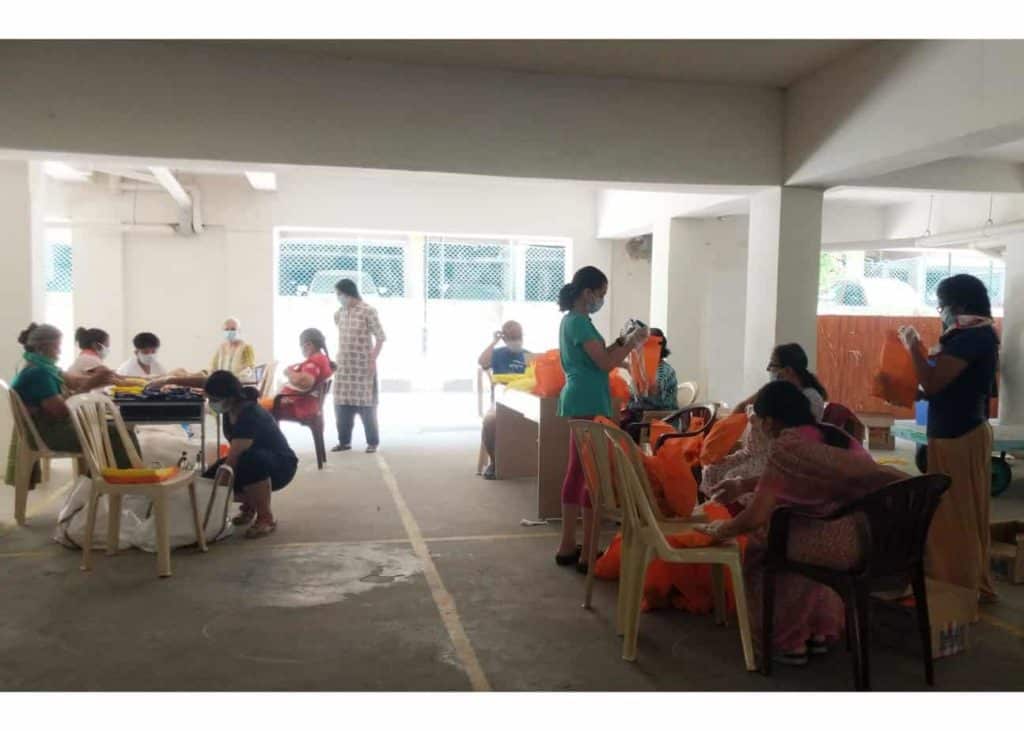Cities, past and present, have been often created in the image of its rulers. Indian cities, in particular, have been witness to the rise and fall of dynasties and empires, reflected in their ever shifting character. However, amongst all its grand constructions for the people, there exists within the urban fabric a continuous patchwork of creations by the people.
While the concept of a planned city traces its roots to ancient civilisations like the Indus Valley, Egyptian and Mesopotamian civilisations, the scale of modern cities is unprecedented. Burgeoning populations and rising densities created the need for a visionary document to chart out the spatial layout of the city.
In the post-independence era, major Indian cities began the preparation of Master Plans with the objective to guide planned development and growth. In fact, the Delhi Development Authority (DDA) is currently in the process of publishing the draft Master Plan for Delhi, envisioning the next 20 years and it is important for citizens of Delhi to understand the document, its contents and how one can further engage in making the Master Plan a people’s document.
What is a Master Plan?
In the 1950s, Indian states began to adopt Town and Country Planning Acts (TCPA), largely based on similar planning acts in the UK. As an outcome of the TCPA, Development Authorities or Statutory Bodies were formed under their own acts, with the objective of city planning and development. The Delhi Development Authority (DDA) was the first such development authority to be set up in India in 1957 under the DDA Act, with its initial objective of creating healthy living environments. Master Plans in India have long been viewed as a formal tool for guiding the growth and development of cities through the preparation of existing situation analysis, future population projections and related infrastructure demand, land use plans and development control regulations.
Who is in charge of making the Delhi Master Plan?
In Delhi’s case, the Delhi Development Authority is responsible for preparation of the master plan as per Section 7 of the DDA Act 1957. The Master Plan is updated every 20 years as per Section 11-A, which mandates modifications to the Plan and further approval by the Central Government. Section 12 of the DDA act gives DDA authority for Development of notified lands.
DDA has so far prepared three master plans (MPD 1962, MPD 2001 and MPD 2021) and we are about to see the city’s 4th master plan, MPD 2041.
What are the broad contents of a Master Plan?
The Master Plan contains a vision for the city, projected populations, future development areas through assignment of land uses attached to development control regulations ( that is, how much you can build on what plot size etc) and finally sector-specific policy directions — pertaining to Ecology, Urban Economy, Shelter, Social & Physical Infrastructure and Mobility.

Have Master Plans really worked in guiding planned growth in our cities?
Technical experts and researchers find most master plans lacking, due to their inability to control urban sprawl through systematic enforcement of development controls, or to sufficiently validate the informal nature of work and housing in cities. Cities are dynamic entities and planning tools have not kept pace with our rapidly evolving urban systems.
Read more: Delhi fights monsoon flooding with 44-year-old drainage plan
Another fundamental reason for the failure of master planning in India has been the lack of people’s participation in the plan making process itself. Whatever little public participation has taken place has been largely tokenistic in nature. However, there is an acknowledgement of this gap by planners and city managers and serious efforts are being taken to make city planning more inclusive.
A number of public consultation meetings were held during the preparation process of MPD 2041, engaging a wide range of stakeholders which included RWAs, Market Trader Associations, Real Estate Groups, Subject Experts, Professional Bodies, Youth, Persons with Disability. These consultations helped DDA understand the existing local level issues as well as collect over 5000 vision statements from various stakeholders which was a key input to MPD 2041.
Does a common citizen’s vision get reflected in the master plan?
From its inception, master plans have been primarily concerned with land and its utilisation. This has historically led city master plans to focus on the aspirations of minority landowners / real estate groups, rather than the needs of the majority of its migrant populations, who have ill-defined stakes in the city. From this has emerged clear gaps between the visions of development authorities, consultants, various city stakeholders, citizen groups and academia. This rich diversity of visions for the city have often led to various ideological conflicts and contests.
What are some examples of conflicts that arise in trying to arrive at a collective vision?
In Mumbai, when Aarey Colony i.e. the green lungs of the city, was being marked for development, environmental activists, community leaders and citizens took to the streets in protest, whereas real estate lobbies favoured this move.
In Bangalore, the very authority of the BDA to plan for the city was questioned as civic activists argued that it was the mandate of the Metropolitan Planning Committee (MPC) to do so, as per the 74th constitutional amendment. These examples highlight the emerging power struggles within the planning framework and the prevalence of elite capture when developing a collective vision; that, in a sense, is a form of participation itself, although in a limited way.
Most times public meetings also bring to the forefront the existing conflicts in visions for development among different citizen groups in the city. For example, in Bangalore, residents of the city centre prefer limiting the growth of the city while the farmers living in the urban periphery prefer the city to expand further.
Read more: Why Bengaluru can’t be Singapore: The crux is land ownership
In Old Delhi, while RWAs wish to restrict further commercialisation due to rising congestion, Market Trader Associations desire improvements in infrastructure to accelerate commercial growth. These instances seek to highlight the fragmentation and lack of compromise city planners face in helping achieve a collectively beneficial vision.
In response, the role of city planners today has evolved from one in which they merely prepare technically sound documents, to one where they must help resolve such conflicts with inclusive approaches, independent of any political agenda. Thus we see city planners as negotiators between the government and citizenry rather than just technocrats.
How much participation is enough participation in city planning?
Experience from public participation meetings held during the preparation process of MPD 2041 yields that there exists a lack of trust between development authorities and citizens, which has limited participation to citizens who only have large stakes in the city. Also, it may not be possible for city governments to engage with a multitude of citizen groups while preparing a master plan. Thus continuous participation is the key to resolving emerging conflicts and achieving larger consensus towards adopted approaches.
This can be achieved by leveraging Information and Communication Technology (ICT) to garner wider citizen participation in planning. It is imperative for governments to invest in digital platforms, where citizens can regularly engage and co-create solutions to wicked problems that plague their neighbourhoods.
During public participation meetings, we also noticed that citizens echoed everyday problems (like irregularity of residential garbage collection or lack of on-street parking within their area), which the Master Plan in its current form may not be able to resolve directly. In order to address this lacuna, it is imperative that local forms of decentralised governance is promoted and we further democratise the process of planning.
Why is local governance important?
Big cities like Delhi continue to deal with a plethora of authorities and stakeholders working at various levels, representing both state and federal interests. As per mandates of the 74th constitutional amendment, a committee needs to be formed that would be responsible for development planning at the metropolitan scale while formation of committees at the ward level would prepare a local area plan.
Read more: Delhi got three new mayors, but can they change anything for the city?
Actions like the 1998 notification by the Union Minister for Urban Development, exempting Delhi from the 74th Amendment and retaining the power to plan and develop with the Union Ministry of Home Affairs, further delegitimize the involvement of local actors in what should ideally be a democratic process.
The importance of the ‘local’ has especially come to the forefront during the ongoing COVID-19 pandemic. People’s personal enterprise has turned auto rickshaws and taxis into ambulances, bikes have been used to transport oxygen cylinders, homes have turned into hospital wards, RWAs and Apartments Associations have come together to help those affected within their neighbourhood through the supply of meals etc. Stories from Dharavi’s response to rising cases showcase a shining example of the efficacy of community self-regulatory mechanisms in strengthening the local authority’s ability to tackle issues.

Can local area plans be institutionalised, and thereby address our complex urban issues?
While debates around local area plans have been happening since its mention in the MPD 2021 close to 15 years ago, there has been limited on-ground traction in terms of its formalisation. One way of achieving this could be through the amendment of the Delhi Municipality Act, giving greater powers to wards and its elected representatives to prepare Local Area Plans.
Local Area Plans can address creation of open/public space, provisioning of social infrastructure, management of solid waste, adoption of sustainable infrastructure services at the local level (waste water reuse/ renewable energy adoption etc).
The effectiveness of local area plans will depend on:
- Who is preparing the plan? (elected representatives or not)
- What is the objective of the plan and how does it dovetail with the larger vision of the City Master Plan?
- Who are the actors involved in the process of its preparation- how inclusive is the process?
- Sufficiency of technical know-how
- Allocation of a budget attached towards the implementation of the plan’s projects etc.
If not, local area planning in its current form is vulnerable to elite capture and can easily fail. This is a call to citizens of Delhi, to engage actively in the planning of the city and create domains where one can voice your opinions and influence the city’s development.
Main Bhi Dilli Campaign is exactly looking at making this possible for DMP ’41 by asking questions like “What does planning look like from the margins?” and “What kind of plans would we make if we were planning for domestic workers, street vendors, dalit-bahujan communities, and other marginalized communities?” They have uploaded factsheets on their website and hold public meetings on this.
Excellent!!!
It would be sub-optimal to make a plan for Delhi alone. What is needed is one unified plan for Delhi NCR.
Excellent analysis
a good article about the theoretical aspect – but naive about the reality of the actual contents and process. The operative tool of the MPD – the Zonal Plans – are inaccurate and out of date. So the entire process is ineffective in physical reality. Important elements like the main drainage channels of Delhi are not even marked on these maps. There are many NON-EXISTENT roads – even wide 24 metre ones- which are shown and even projects approved on the basis of these! Inspite of such information being given in writing to DDA and others ( incl NIUA ) there is ZERO response or action.